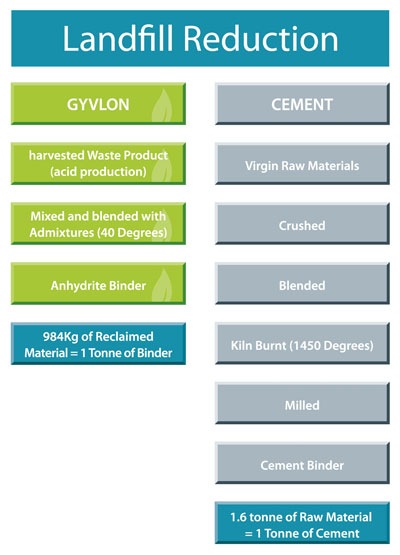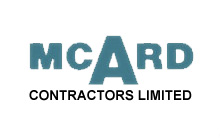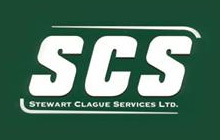| The Environmental benefits of Gyvlon can be broken down to material sourcing, manufacturing energy consumption, material delivery and material usage on site; |
Material Souring/Recyclability – Gyvlon binder is manufactured from a synthetic anhydrite which is a by product of the chemical industry. Prior to the material being used for floor screed binder it could have gone to landfill or have been disposed of in the Fjords of Norway.  Gyvlon utilise approx 980kg of synthetic anhydrite per tonne of binder, compared to the 1.6 tonne of raw material required to produce a tonne of cement, meaning each 1000m2 of Gyvlon installed reduces landfill by 34 tonne. In addition to an increased recycled content in construction Gyvlon screeds are also 100% recyclable at the end of the buildings life cycle. Gyvlon utilise approx 980kg of synthetic anhydrite per tonne of binder, compared to the 1.6 tonne of raw material required to produce a tonne of cement, meaning each 1000m2 of Gyvlon installed reduces landfill by 34 tonne. In addition to an increased recycled content in construction Gyvlon screeds are also 100% recyclable at the end of the buildings life cycle. |
| Energy Consumption – Since Gyvlon’s manufacturing process doesn’t require the kiln burning phase associated with cement production there is a considerable energy saving per tonne. Cement is kiln burnt at around 1450 degrees during it manufacture where as Gyvlon is not subjected to heat other than that created during the milling process. |
| Material Delivery – Gyvlon binder is delivered from the production facility to Island Aggregates where it is silo stored ready to be converted to screed mortar as required. The eliminates the generation of unnecessary amounts of waste packing and the associated environmental impact. |
|
Material Useage – All of Gyvlon’s screed and system solutions benefit from higher flexural and compressive strengths than you would expect from sand cement, meaning the total screed depth can be greatly reduced offering up to a 40% saving in the raw material required and delivery truck movements. |









